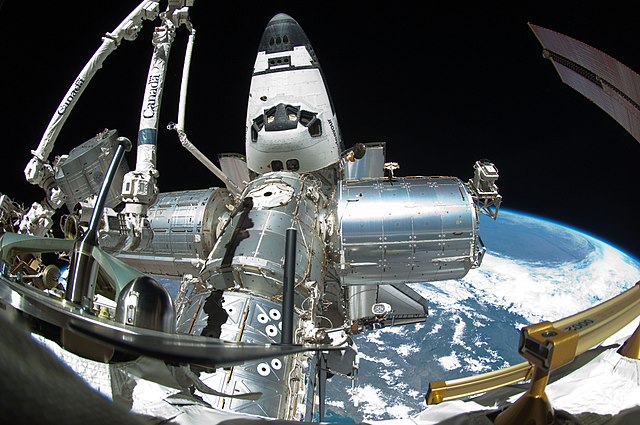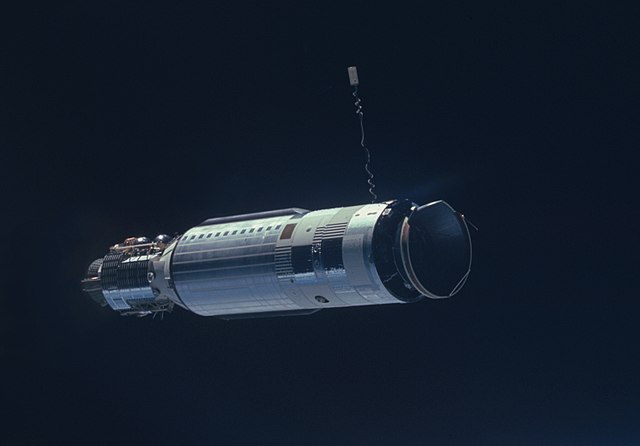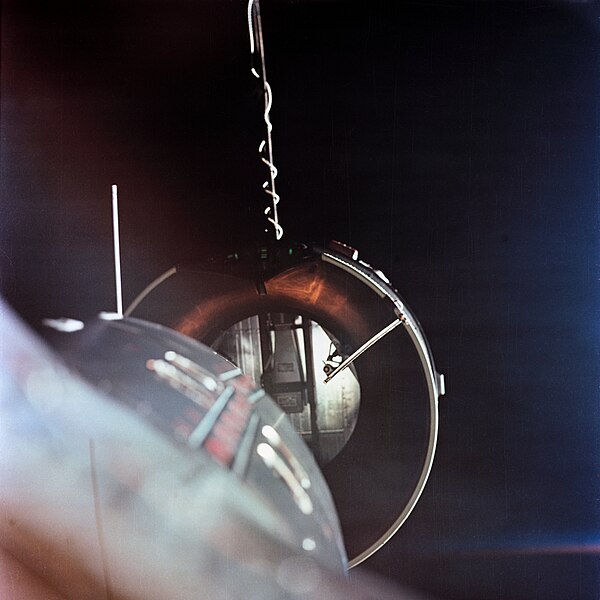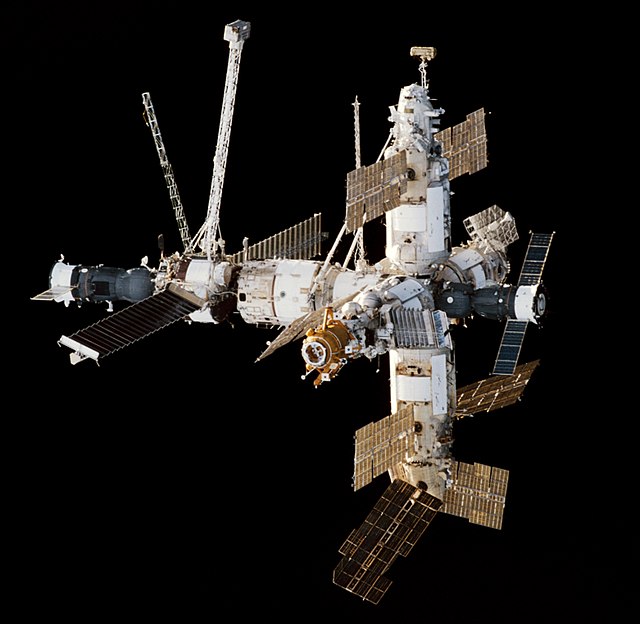International Space Station
The International Space Station (ISS) is a large space station assembled and maintained in low Earth orbit by a collaboration of five space agencies and their contractors: NASA, Roscosmos (Russia), JAXA (Japan), ESA (Europe), and CSA (Canada). The ISS is the largest space station ever built. Its primary purpose is to perform microgravity and space environment experiments.
Oblique underside view in November 2021
Comet Lovejoy photographed by Expedition 30 commander Dan Burbank
Expedition 8 Commander and Science Officer Michael Foale conducts an inspection of the Microgravity Science Glovebox
Fisheye view of several labs and the Space Shuttle
A space station is a spacecraft capable of supporting a human crew in outer space for an extended period of time and is therefore a type of space habitat. It lacks major propulsion or landing systems. An orbital station or an orbital space station is an artificial satellite. Stations must have docking ports to allow other spacecraft to dock to transfer crew and supplies. The purpose of maintaining an orbital outpost varies depending on the program. Space stations have most often been launched for scientific purposes, but military launches have also occurred.
Gemini 8 Agena target vehicle
Gemini 8 docking with the Agena in March 1966
The U.S. Skylab station of the 1970s
Mir station seen in 1998








